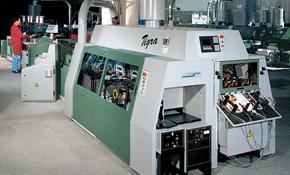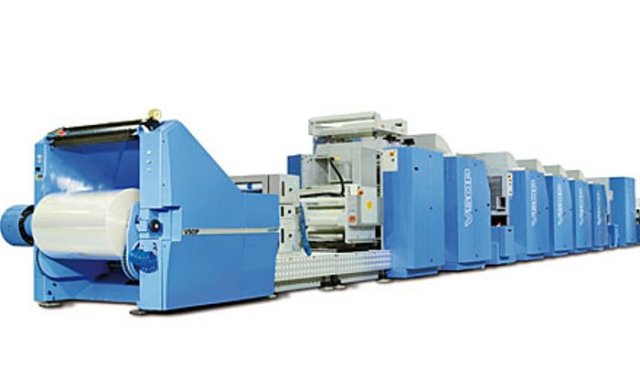
There were no major changes made to the Tigra during its life cycle but, according to dealers, its ease of set-up has meant continued demand. However, its modest speed of 3,600 books per hour has limited the machine to the entry-level sector.
The Tigra works by feeding gathered books by hand or from the gatherer, which are then run over a vibrator belt on to the infeed roller table. “Here they get positioned in a hinge clamp and then are guided right away over the milling or roughing head,” says Peter Freeman, used equipment division manager at Muller Martini.
High demand
Four line scoring prepares the cover before it is positioned on the oscillating nipping station table; the cover then gets pressed and nipped. Next the clamp opens and the book drops vertically on to the belt. At the end of the channel the book is directed either left or right and pushed gently into the horizontal position. “What typically follows is a conveyor system leading into a three-knife trimmer,” says Freeman.
SPECIFICATIONS
Book width
Min: 100mm
Max: 285mm
Book thickness
Min: 2mm
Max: 40mm
Speed
Min: 1,000bph
Max: 3,000 bph
What to look for
• Wear on the glue tank roller shaft seals and gears, clamp springs, cover feed scoring and transfer area, which could affect book-to-cover alignment
Read the original article at www.printweek.com.
Comment below to have your say on this story.
If you have a news story or tip-off, get in touch at editorial@sprinter.com.au.
Sign up to the Sprinter newsletter

